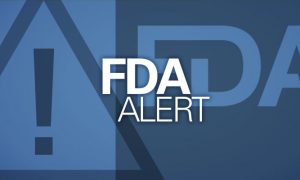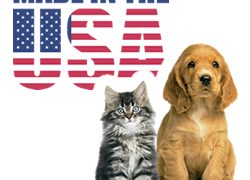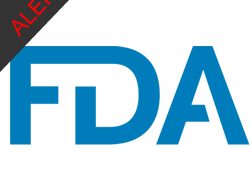If you have a dog then you’ve probably noticed that there are hundreds of dog foods in the market today. Whether you go to a pet supply store, pet boutique, or search online, trying to choose the right food for your dog can be overwhelming. Dry or wet/canned food? Grain free or grain-inclusive? Limited ingredient? GMO-free, gluten-free, low-glycemic? And who knows what the heck some of the ingredients are, right?
Welcome to the challenging world of trying to buy a good dog food!
So, how do you narrow down your choices and figure out what your dog needs versus just closing your eyes and picking a food? Or should you just buy what your neighbor or best friend feeds their dog?
First of all, don’t buy a dog food just because your neighbor or best friend feeds it to their dog. Start with the idea that every dog is different with different nutritional needs. Your dog is different from your friend’s dog. If your friend has an older, overweight Dachshund you probably don’t need to feed your young, energetic German Shorthaired Pointer the same food the Doxie eats.
In order to choose the right food for your dog, you can ask the following questions to help narrow your choices:

- How old is your dog?
Dog foods are formulated for different life stages. The Association of American Feed Control Officials (AAFCO) provides labeling guidelines for pet food manufacturers. Foods that are labeled “complete and balanced” can be formulated for growth and development/all life stages or maintenance. The different formulations have different nutrients for different life stages. If you have a puppy, you should look for a food that is labeled for “growth and reproduction” or “all life stages.” If you have an adult dog you should look for foods that are labeled for “maintenance” or “all life stages.” Foods that are labeled “all life stages” can be fed to all dogs, regardless of age.
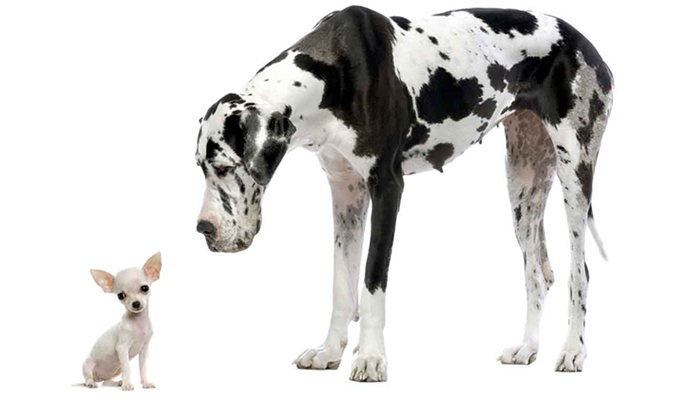
- What size is your dog? (If your dog is a puppy, it helps to know what size s/he will be when s/he grows up.)
Large breeds and Toy/small breeds can have some special nutritional needs. For example, many large/giant breeds grow very fast as puppies. This can put added stress on their bones and joints, leading to arthritis and other health problems later in life. Breeders often recommend that large/giant breed puppies be fed a puppy food that is designed for large breed puppies to help encourage slower growth. It’s especially important that large/giant breed puppies have the correct calcium to phosphorus ratio in their food . This ratio is about 1.2:1. You should not add calcium supplements to a puppy’s food if he is eating a good puppy food since this can also lead to bone and skeletal problems later in life.
Toy/small breed can also have some issues. These breeds tend to have a faster metabolism than medium and large dogs. They burn up more calories than their larger doggy friends. For this reason, many dog food companies make dog foods that are formulated for small breeds. These foods usually have more calories per ounce. Small dogs cannot eat very large meals so the food is nutrient-dense, allowing a small dog to take in a lot of nutrients and calories in a small meal.
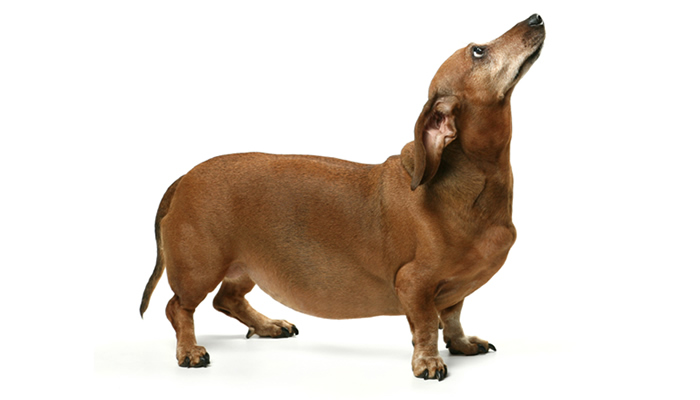
- Is your dog overweight?
It’s estimated that over 50 percent of the dogs in North America today are overweight or obese. If your dog is overweight you might need to consider a food with fewer calories or less fat. Or you could re-examine your current feeding practices. Free feeding (leaving food down all the time) encourages dogs to over-eat. Measuring your dog’s portions and only leaving food down for 15-20 minutes can prevent your dog from snacking all day and putting on weight. You can also cut down on fattening treats. Try replacing treats that have lots of calories with healthier treats like apple pieces. Encourage your dog to get more exercise.

- Does your dog have any health problems?
If your dog has a specific health problem, talk to your veterinarian about what kind of food he needs. Depending on his health problem, he might need a prescription diet. These foods are expensive but they are sometimes necessary. You can also ask your veterinarian if there are any commercial dog foods that could be fed in place of a prescription food.

- Does your dog have any food allergies or sensitivities?
Many premium dog foods today are formulated to help dogs avoid certain food allergens. Grain free dog foods began this way. Foods with exotic meat proteins (buffalo, venison, kangaroo, etc.) were created for this purpose. Limited ingredient diets are made for dogs with food allergies and sensitivities. The majority of dogs do not have food allergies or food sensitivities but many of these foods contain very high quality ingredients so they can be a good choice for any dog. (Though we caution that if you feed foods with exotic meat proteins, you may not have a selection of novel meat proteins if your dog happens to develop a food allergy.)
Dogs can be allergic to many things but they tend to be allergic to some of the most common dog food ingredients simply because they have the most exposure to them: beef, dairy, chicken, lamb, fish, corn, wheat, soy. Some people have started adding rabbit to this list. If your dog is not allergic to these ingredients, you don’t have to avoid them – though many people avoid soy for other reasons. Corn and wheat have also become unpopular dog food ingredients (a topic for another day). If you know that your dog is allergic or sensitive to an ingredient, look for foods that don’t contain it. In some cases, dogs can be allergic or sensitive to multiple ingredients.
Of course, you will also have to consider your budget when buying dog food. Honestly (and speaking as the owner of four large dogs), some dog foods are incredibly expensive! My dogs get better food than I do but it makes me happy. Everyone has different circumstances. You can find good foods for a modest price; and some foods with great reputations are over-hyped and over-priced, in my opinion. On the other hand, cheap dog food usually has cheap, poor quality ingredients. Learning to read a dog food label, knowing ingredients, and understanding how to figure the dry matter basis of a food are helpful in choosing foods (also a topic for another time).
Hopefully, by asking yourself these questions about your dog’s age and condition you can start to make some choices about which food is right. There doesn’t have to be one right food for your dog. It’s fine if you try several foods to see how your dog likes them. Be sure to feed the food for a few weeks to give it a chance. And don’t change the food too quickly or it will likely upset your dog’s stomach.
Have fun browsing and comparing dog foods!



